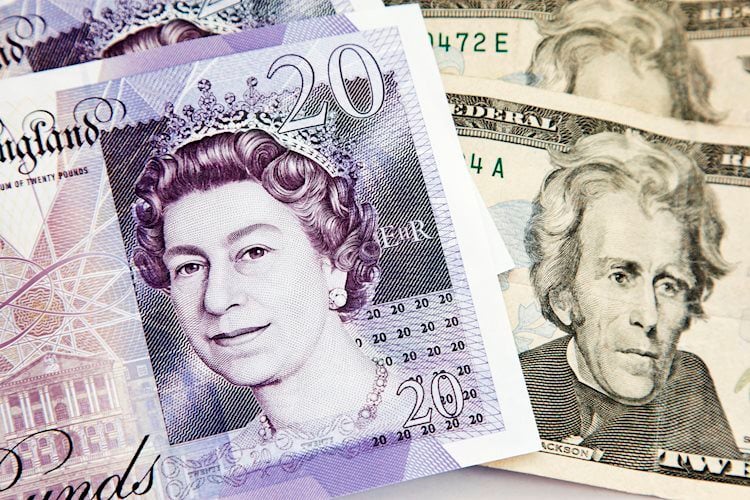- GBP/USD struggles for a firm intraday direction and oscillates in a range on Monday.
- Bets for a less dovish Fed act as a tailwind for the USD and cap the upside for the pair.
- BoE Governor’s predicted four rate cuts in 2025 also warrant caution for the GBP bulls.
The GBP/USD pair kicks off the new week on a subdued note and oscillates in a narrow trading band, below mid-1.2700s during the Asian session. Spot prices, meanwhile, remain within striking distance of over a three-week high – levels above the 1.2800 mark – touched on Friday, though the fundamental backdrop warrants some caution for bullish traders.
The US Nonfarm Payrolls (NFP) report released on Friday showed that the Unemployment Rate inched higher in November and reaffirmed expectations that the Federal Reserve (Fed) will lower borrowing costs in December. The initial market reaction, however, turned out to be short-lived amid bets that the US central bank would slow the pace or pause its rate-cutting cycle in January. This, in turn, assists the US Dollar (USD) to hold above its lowest level in nearly one-month low, which, in turn, is seen acting as a headwind for the GBP/USD pair.
Apart from this, persistent geopolitical tensions, China’s economic woes and concerns about US President-elect Donald Trump’s impending trade tariffs turn out to be other factors lending support to the safe-haven Greenback. The British Pound (GBP), on the other hand, struggles to lure buyers amid the Bank of England (BoE) Governor Andrew Bailey’s dovish outlook, signaling four interest rate cuts in 2025. This further contributes to capping the upside for the GBP/USD pair as traders now look to the US consumer inflation figures for a fresh impetus.
The crucial US Consumer Price Index (CPI) report, due for release on Wednesday, should offer more cues about the Fed’s rate-cut path and guide policymakers’ decision at the December meeting. This, in turn, will play a key role in driving the near-term USD demand and help in determining the next leg of a directional move for the GBP/USD pair. In the meantime, BoE Deputy Governor David Ramsden’s speech later this Monday might influence the GBP price dynamics and allow traders to grab short-term opportunities.
Pound Sterling FAQs
The Pound Sterling (GBP) is the oldest currency in the world (886 AD) and the official currency of the United Kingdom. It is the fourth most traded unit for foreign exchange (FX) in the world, accounting for 12% of all transactions, averaging $630 billion a day, according to 2022 data. Its key trading pairs are GBP/USD, also known as ‘Cable’, which accounts for 11% of FX, GBP/JPY, or the ‘Dragon’ as it is known by traders (3%), and EUR/GBP (2%). The Pound Sterling is issued by the Bank of England (BoE).
The single most important factor influencing the value of the Pound Sterling is monetary policy decided by the Bank of England. The BoE bases its decisions on whether it has achieved its primary goal of “price stability” – a steady inflation rate of around 2%. Its primary tool for achieving this is the adjustment of interest rates. When inflation is too high, the BoE will try to rein it in by raising interest rates, making it more expensive for people and businesses to access credit. This is generally positive for GBP, as higher interest rates make the UK a more attractive place for global investors to park their money. When inflation falls too low it is a sign economic growth is slowing. In this scenario, the BoE will consider lowering interest rates to cheapen credit so businesses will borrow more to invest in growth-generating projects.
Data releases gauge the health of the economy and can impact the value of the Pound Sterling. Indicators such as GDP, Manufacturing and Services PMIs, and employment can all influence the direction of the GBP. A strong economy is good for Sterling. Not only does it attract more foreign investment but it may encourage the BoE to put up interest rates, which will directly strengthen GBP. Otherwise, if economic data is weak, the Pound Sterling is likely to fall.
Another significant data release for the Pound Sterling is the Trade Balance. This indicator measures the difference between what a country earns from its exports and what it spends on imports over a given period. If a country produces highly sought-after exports, its currency will benefit purely from the extra demand created from foreign buyers seeking to purchase these goods. Therefore, a positive net Trade Balance strengthens a currency and vice versa for a negative balance.












